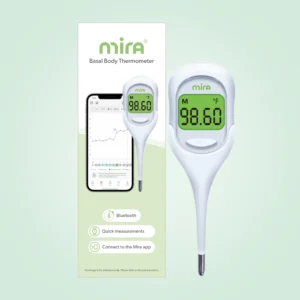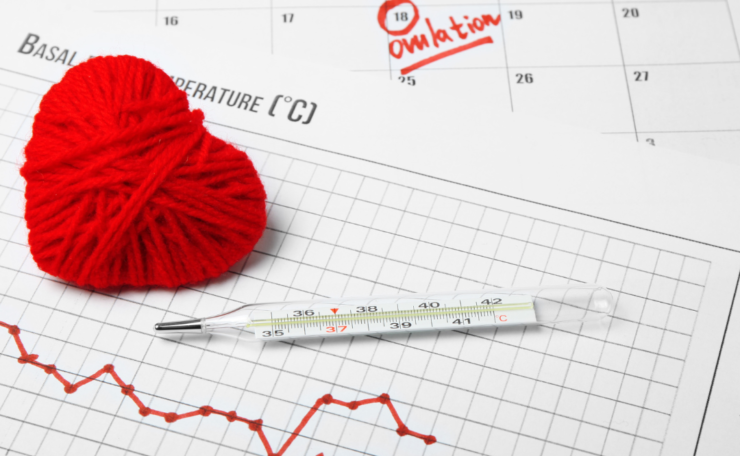How Can We Unravel the Benefits of Cycle Charting?
Are you experiencing difficult cycles, absent cycles, fertility issues? Cycle charting can help you unravel the basic concept of how your hormones are functioning and your fertile signs for determining when ovulation is going to happen. It can give you much information into how your hormones  are functioning or not functioning month to month.
are functioning or not functioning month to month.
By recording different signals from your body day to day over the period of several months, you can begin to recognize the pattern which indicate ovulation and your most fertile days. The idea of charting can seem complicated and overwhelming. But, what it doesn’t have to be and what you can learn and understand about what is happening in your body, can make it very worthwhile! You can gain so much information about your heath by charting. If you know what to look for, it doesn’t take much time to begin to put the signs together. There are lots of options to help along the way!
How Your Cycle Works
First, let’s review the phases you experience during your monthly cycle. This will be useful when we talk about how your basal body temperature, cervical mucus and cervix position change during each of these phases. The four phases of the menstrual cycle are:
- The Menstrual Phase – The very first day of menstruation is day one of your cycle. This usually lasts from three to seven days.
- The Follicular Phase – During this phase your uterine lining begins to thicken in preparation for a possible implantation. Follicle Stimulating Hormone (FSH) levels increase which prompts the maturation of the follicles in your ovaries. These follicles will eventually develop into eggs throughout this phase. Only one single egg will be released during the next phase of the cycle.
- The Ovulatory Phase – Ovulation occurs when an egg is released from one of your ovaries around mid-cycle – anywhere from day 11 to day 16 is typically when this happens. The egg will have about 24 hours to become fertilized. Remember, sperm can stay alive up to 5 days!
- The Luteal Phase – Right after ovulation, you have an increase in progesterone, which is fueled by the corpus luteum, which is the follicle responsible for releasing the egg. This all occurs during the luteal phase. If this egg becomes fertilized, the increase in progesterone aids in the process of implantation – usually from five to ten days after ovulation. If it is not fertilized or implantation does not take place, they body will cycle back to the menstruation phase.
While the average menstrual cycle lasts 28 days, normal cycles can be anywhere from 21 to 35 days. Variations of three to five days in your cycle length from month to month really isn’t anything to worry about. Pinpointing the patterns of ovulation only requires learning about and remaining aware of the three basic signals your body will give to you.
Recognizing the 3 Signals of Ovulation
During any given cycle, your body is shifting and changing as it moves through the four phases discussed. The three ways those changes will be most obvious to you are through elevations in your basal body temperature, consistency changes in your cervical mucus and shifts in the position of your cervix. By recognizing those changes and identifying your most fertile days is possible by watching for these three ovulation signs:
Signal 1 – Basal Temperature
The first piece of fertility puzzle is BBT – Basal Body Temperature. By combining BBT with the two other signals of ovulation, you can put together a plan for your hormones and fertility.
Your Basal Body Temperature is what his known as your baseline temperature. This is the temperature you will be measuring first thing in the morning prior to getting out of bed or partaking in any activities or conversations – which all could alter your temperature. BBT is important as it varies by small percentages day to day throughout the course of the month as a result of hormone changes your body will experience during different phases. After a few months of monitoring, you will notice peaks which occur immediately following ovulation. This will be helpful estimating ovulation occurring in the future allowing you to identify your fertile window.
Monitoring your BBT means keeping a thermometer by your bed for easy access in the morning. You should aim to take your temperature at the same time every day – always immediately upon waking up.
So, steps for getting started recording your BBT, follow these steps:
- Invest in a basal body temperature thermometer which is more sensitive and accurate than a regular thermometer.
- Take your temperature consistently. Take your BBT each morning, immediately after waking up and before getting out of bed. It’s important to take your temperature at the same time each day to ensure accurate readings.
- Record your temperature using a BBT chart, mobile app, or digital platform to log your temperature daily. Make a note of any factors that could impact your temperature – illness, alcohol consumption, disrupted sleep.
- Look for patterns over time – you’ll notice patterns in your BBT. Your temp should be lower during the first half of your cycle and will rise after ovulation due to increased progesterone production. Your BBT will generally remain elevated until your next menstrual period if you don’t conceive.
- You can identify your fertile window by tracking your BBT for several cycles. You will be able to identify the most fertile days of your cycle which can help you time trying for the best chance of conception.
Signal 2 – Cervical Mucus
Your second sign of ovulation can be found by monitoring your cervical mucus. Your cervical mucus changes throughout the month in order to become more hospitable for sperm as you are approaching ovulation which turns into fertile mucus. This is valuable knowledge to review when it comes to determining when your fertile window may be.
After menstruation you will start getting a small amount of cervical mucus on your fingers or toilet paper each day. Begin monitoring it for consistency – is it stringy – slippery – sticky – it will change from day to day. You won’t have much mucus right after menstruating. By second week of your cycle it should begin to increase. First, it will appear thick and sticky with a white or yellowish coloration. As you get closer to ovulation, the clearer and stretchier it will become. This is considered fertile mucus. This paves the way for sperm to travel easily to the egg. It is often referred to “egg-white cervical mucus” because it resembles egg-whites.
Signal 3 – Position of Cervix
This is another way to determine when you are nearing ovulation naturally. The hormonal fluctuations in your body cause your cervix position to shift, moving up and down while also becoming more or less firm – depending on where you are in your cycle.
Daily repetition of checking the position of your cervix will help you begin noticing the difference throughout the course of your cycle. Start by finding a comfortable position an sticking one or two fingers inside your vagina. Reaching back against your vaginal wall you will want to find the small opening about a fingers-length back. This opening is where you will notice changes based on which phase of your cycle you are in. As you near ovulation, your cervix will feel higher than it does immediately following menstruation. It will also feel softer to the touch and more open, preparing for the entrance of sperm. Monitoring your cervical position will become something you can quickly and easily at the start of each day.
Charting
Now you know what the ovulation signs are that you should be looking at. Let’s discuss how charting comes into play. By documenting the signals from day to day, you will begin to recognize the patterns in your basal body temperature, cervical mucus an cervix position which can help you estimate your fertile window. This allows you to take advantage of the best possible chances for conception.
Create a chart starting with the first day of your period as day one. On the chart – or by using an app – make notes pertaining to the signals you have have observed each day which will include your BBT, cervical mucus information and position of your cervix. Your temperature should increase about 0.4 degrees after your ovulate, remaining slightly elevated for the remainder of your luteal phase. Seeing all these signals together should help you to start recognizing the days of your cycle when ovulation is typically occurring month to month.
Changes in your charting can also help you to indicate when there is something going on in your body. It’s a great way to monitor your overall health and wellness. It can be our greatest barometer to showing us when we need to make some changes in relation to our hormone and overall health.
For help with charting and interpreting your charts, get in touch. We can schedule a time to review your charts and I can give you some guidance and support for learning how to chart. There are many options for charting – fertility monitors – apps – and more. For more information on what is available – get in touch. You can set up a complementary consult here. I will be happy to help.




